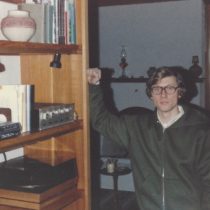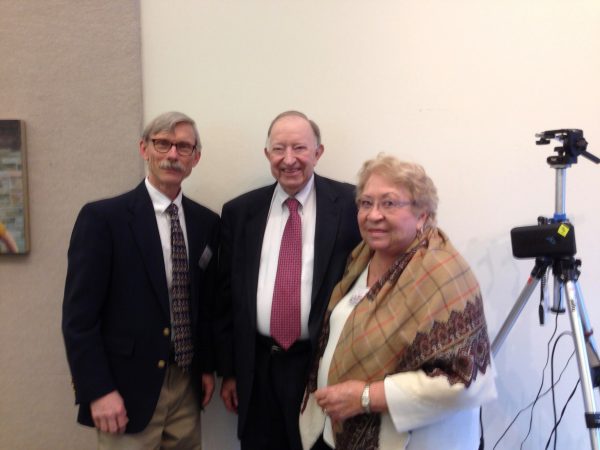The 1979 incident at TMI is still a vivid memory for me. Now, with the fortieth anniversary approaching, there is one nagging thought not possible for me to dismiss.
I recall where I was when the initial news broke over the local AM radio station on my way into York that morning. There were no details, but it had a serious tone. Like September 11, 2001, the day’s news would slowly build to turn everyone’s attention to what was going on, except that no one really knew what was going on. My initial impression was—Oh, my, this is going to be a day of misinformation and unnecessary confusion directed to an uninformed public made worse by an uninformed media on how nuclear power plants work. It would be months later that a local newspaper reporter was at my home for an unrelated feature and recounted her on-site experiences with national media celebrities like Walter Cronkite. They really were clueless about what and how to report any plant status information.
 It was nearly six years earlier that I left the Navy in 1973 as a nuclear reactor plant operator after serving on the USS Enterprise—an aircraft carrier with eight nuclear reactors and thirty-two steam generators that powered four main steam engines to propel the ship and launch planes, as well as, make electricity to run the ship. It was an engineering marvel of its day, and the reactor crew was the best trained in the world.
It was nearly six years earlier that I left the Navy in 1973 as a nuclear reactor plant operator after serving on the USS Enterprise—an aircraft carrier with eight nuclear reactors and thirty-two steam generators that powered four main steam engines to propel the ship and launch planes, as well as, make electricity to run the ship. It was an engineering marvel of its day, and the reactor crew was the best trained in the world.
So, on the morning of March 28, 1979, I wasn’t concerned. Safety designs for Navy reactors have redundant backup systems and automatic shutdown procedures if any component fails. An integral part of our training was to understand what sequence of events would occur if even a minor part failed to operate. No matter how many steps it took in a series of actions, the reactor would shut down safely. For ships at sea, there was a design provision that would ensure the control rods would insert downward into the core for a shut down—even if capsized, or, as the Navy would call it—an inadvertent loss of gravity.
In the 1960s, as the nuclear age was evolving from WWII weapons to peaceful use for electricity, I can recall an exhibit at the 1964 World’s Fair in New York. Many can quote the futuristic prediction from that era that by using nuclear energy, “electricity would be too cheap to meter,” meaning it would be so abundant at low cost that we could use as much as possible and just be charged a flat rate in our homes and businesses.
At that Worlds Fair Atomic Energy pavilion, you could take a dime and have it “irradiated” with gamma rays—how cool was that! Then you put it back in your pocket and moved on. It was harmless, but it would be a few years later until I understood and in turn could explain why. Which brings us back to March 1979.
Even with all the documentation and hindsight of what happened at TMI on the initial incident day, and the following days to get the plant stabilized, there’s still a lot of dispute on what the effects and consequences were (or still are). Public panic set in when the media reported a radiation release with no quantifying information. Was it gaseous or particulate? Was it in the air or in the water or both? Was it Alpha, Beta or Gamma forms of radiation? It makes a difference on how to avoid being contaminated and how to be decontaminated and treated if exposed. Did it exceed the limits in the US Code of Federal Regulations? Did the public and media know the limits in the US Code of Federal Regulations?
Many took that as a sign to get out of town.
And then there was the wild speculation on whether the plant would “blow up” if the mysterious “bubble” in the reactor was not managed. Remember that? Residents living well beyond the ten-mile radius were packing up and driving as far as they could to some subjective safe zone. One small borough near me had an emergency management coordinator do exactly that—he and his family headed for Delaware. Everyone else should fend for themselves. Highways were jammed, and Governor Thornburg had not yet ordered a full evacuation. Under pressure, he did order a partial evacuation for vulnerable groups. Many took that as a sign to get out of town.
 After analyzing the incident many years later, it was apparent that the evacuation plans for each county were not coordinated for such a regional mass catastrophe. Basic emergency plans called for Dauphin County traffic to be directed to Cumberland County. Oh, wait. Cumberland County was directed to Dauphin County. Funny now—not so funny then.
After analyzing the incident many years later, it was apparent that the evacuation plans for each county were not coordinated for such a regional mass catastrophe. Basic emergency plans called for Dauphin County traffic to be directed to Cumberland County. Oh, wait. Cumberland County was directed to Dauphin County. Funny now—not so funny then.
Hershey Medical Center had plans in place for one or two workers to be decontaminated in a maintenance related type emergency. Now they were scrambling to process hundreds if needed. How do you do that? Initially, it was proposed to hook up fire hoses in the parking lot to wash down personnel. Realizing the cool March weather and that the water main temperature is 55 degrees, what’s Plan B?
Met-Ed (later to be part of First Energy) operated the TMI power station and was just completing the second plant at the end of 1978. There was a rush to get #2 “online” for the typical business reasons any investor-owned utility would want to—profit. The official date was December 30, 1978—just in time. Bear in mind that the structure of electric utilities then was wholly owned and operated. Met-Ed generated the electricity and sold it directly to their customers, unlike today’s arrangement of electric choice. So, Met-Ed had to recover the cost of constructing TMI as quickly as possible to blend it into the rates Met-Ed customers paid. See where this is going?
Back then, commercial nuclear plants lacked the high standards of the Navy when it came to training. Commercial control room operators just needed to know how to follow procedures from a book. They didn’t need to have comprehensive knowledge. Loads on a commercial reactor plant change slowly compared to fast changes brought on by a ship maneuvering at sea and launching planes with a steam catapult. When an alarm sounded or a warning light came on—see what the book says to do. When I was on duty, I knew what to do and so did the guy next to me and the officer in charge standing behind us. We had the book memorized.
Fortunately, commercial plant operators are vastly better trained today.
So many great individuals spoke about what “we didn’t know at the time”
So, what is it that still nags me about TMI? It was sometime in December 1978 that I received a phone call at home one evening. A former shipmate had left the Navy after I did and was working for Babcock and Wilcox, the company that built TMI. My friend, name withheld, said he was working at TMI “trying to straighten out the mess the plant was having with the steam generators in Plant 2.” He briefly described the problem, and then said he’d call me back so we could get together. He never called back. For a long time, I forgot about the call.
In March 2014, Penn State-Capitol Campus held a two-day thirty-fifth-anniversary seminar on TMI. I attended. Most of the prominent individuals were there to re-live the events surrounding the incident. Speakers included Governor Dick Thornburgh and Harold Denton, the man sent by President Jimmy Carter to “save the day” and calm the public fears. So many great individuals spoke about what “we didn’t know at the time” and how that has now benefited so many critical areas of public safety that are in place from lessons learned.
I spoke up at the seminar with my story. It was not considered significant compared to the full scenario of events. It is true that the severity of the incident was largely due to “operator error” and had the wrong action by a control room operator(s) not been taken, the plant would have shut down safely all on its own. No nuclear plant design accident analysis can factor that in. And yet, what did my friend know that might have contributed to the initial fault that started the incident? Could that have been part of some cost-cutting considerations to meet a deadline? That’s the unknown part that still nags me.
Also, at the time, the US economy, and the nuclear industry specifically, was still reeling from a period of steep inflation that nearly stopped the nuclear industry from expanding. The incident at TMI brought that to a complete stop.
At that 35th anniversary, it was concluded that there would be no more anniversaries—all the important living figures then are not likely to want to do it all over again. As long as there’s never another TMI, I’m okay with that.
Joe

Joe with Harold and Mrs. Denton – March 29. 2014
